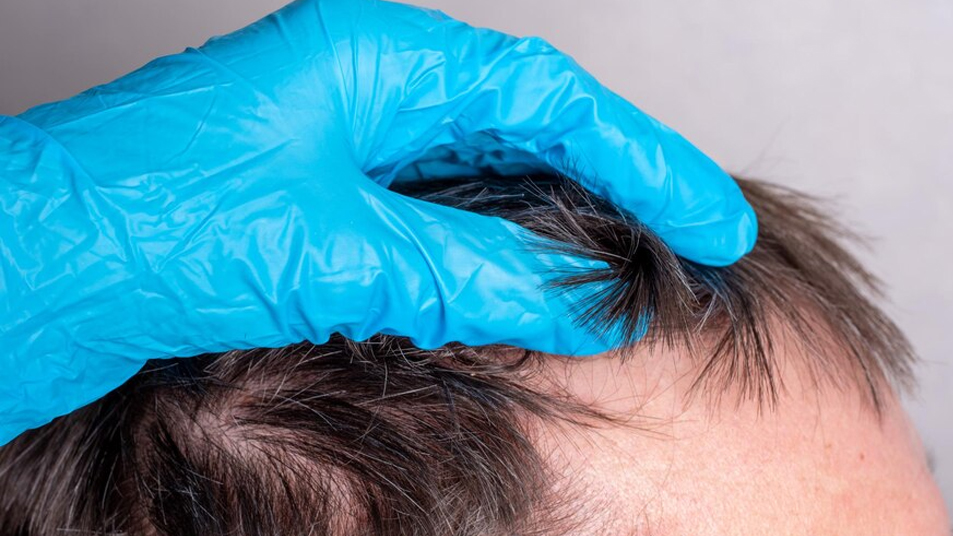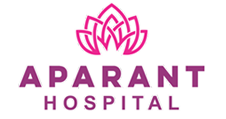
Aparant Hospital" is a state of the art Multi-Disciplinary Super Speciality Hospital venture equipped with an
expert & Specialized care Consultants with very prompt & skillful caring nursing staff, proactive approach
towards Health, very ultra- modern world class diagnostics & refined treatment gadgets to provide a global
level quality care at an affordable local level cost through very sound, reliable, skillful & experienced medical &
paramedical personnel system.
At Aparant Hospital, we have a separate division for Hair Treatment offering Advanced Therapies for Hair
problems.
PRP for Hair loss
Platelet-Rich Plasma (PRP) therapy is a popular, minimally invasive treatment for hair loss. It involves using a
patient's own blood to promote hair regrowth.
Platelets are pieces of blood cells that are essential for healthy blood coagulation and contain a variety of
growth factors. Growth factors are proteins that, among many other things, tell the body to produce particular
tissues, including skin and blood vessels, following an injury. PRP involves centrifuging a patient's blood into
distinct layers, such as plasma, red blood cells, and a buffy coat layer that contains all of the platelets. The
growth factors dwell in this layer, which is called platelet-rich plasma because it is isolated from the others
and contains a modest amount of plasma.
How PRP Works for Hair Loss
Platelet-Rich Plasma (PRP) therapy is a non-surgical treatment for hair loss that utilizes your body's own
healing properties to stimulate hair growth. It involves injecting concentrated platelets derived from your
blood into areas of the scalp where hair thinning or loss is occurring.
Preparation : A small amount of blood is taken from your arm, similar to a routine blood test. The blood is placed in a
centrifuge, which spins at high speed to separate its components. This process isolates the platelet-rich
plasma from red and white blood cells.
Platelet Activation : The concentrated PRP contains growth factors and proteins that stimulate cell repair and regeneration.
Sometimes, a small amount of calcium chloride or thrombin is added to activate the platelets and enhance
their efficacy.
Injection :The PRP is injected into the scalp in areas where hair thinning or hair loss is evident, such as the crown or
hairline. Injections are done using a fine needle and are typically spaced apart to cover the affected area.
Mechanism of Action :
Growth factors in PRP encourage dormant or miniaturized hair follicles to enter an active growth phase.
PRP improves blood flow to the hair follicles, providing essential nutrients and oxygen. PRP promotes
collagen production and healing in the scalp, which may improve the overall health of the scalp and hair.
Treatment Schedule : Most protocols recommend an initial series of 3–4 treatments spaced 4–6 weeks apart. Maintenance
treatments may be needed every 4–6 months, depending on individual results and the severity of hair loss.
Effectiveness : PRP is most effective for individuals experiencing early stages of hair thinning (androgenic alopecia or other
types of thinning). Results vary; some individuals notice thicker hair and reduced shedding within a few
months, while others may take longer. PRP is generally not effective for advanced baldness where follicles
are entirely absent.
PRP therapy is often used in conjunction with other treatments like medications (e.g., minoxidil, finasteride) or
hair transplant surgery to maximize results. Always consult with a dermatologist or hair restoration specialist
to determine if PRP is suitable for you.
Benefits of PRP for Hair Loss :
Platelet-Rich Plasma (PRP) therapy is a popular, non-surgical treatment for hair loss. It involves using the
patient’s own blood, which is processed to concentrate the platelets and growth factors, and then injected
into the scalp. PRP is most effective in the early stages of hair loss. Results vary between individuals, and
multiple sessions are often required. It is not a permanent cure for hair loss and works best when combined
with a comprehensive hair care regimen.
Key benefits of PRP for Hair Loss
Stimulates Hair Growth : PRP contains growth factors that stimulate the hair follicles, encouraging the
regrowth of thicker, healthier hair. It may help dormant or weakened follicles become active.
Improves Hair Thickness and Density : Regular PRP treatments can enhance the quality of existing hair
by increasing its thickness and density, improving overall scalp coverage.
Natural and Minimally Invasive : PRP uses the patient’s own blood, making it a natural treatment with
minimal risk of allergic reactions or rejection. The procedure involves simple injections, avoiding
surgery or significant downtime.
Promotes Scalp Health : The growth factors in PRP can improve scalp circulation and reduce
inflammation, creating a healthier environment for hair growth.
Customizable Treatment : PRP can be tailored to individual needs, and it is often combined with other
therapies such as microneedling, topical treatments, or medications like finasteride and minoxidil for
better results.
Potential for Long-Term Results : With regular maintenance sessions, PRP can provide sustained
improvement in hair growth and help slow the progression of hair loss.
Suitable for Various Types of Hair Loss : PRP is particularly effective for androgenetic alopecia (pattern
baldness) but can also benefit individuals with other types of hair thinning, such as stress-induced hair
loss or post-surgical shedding.
Boosts Confidence : By improving hair density and appearance, PRP can enhance self-esteem and
overall quality of life for individuals dealing with hair loss.
Who’s a Good Candidate for PRP?
The greatest prospects, like with nearly all non-surgical hair loss therapies, are individuals who have recently
suffered hair loss and have thinning hair rather than total baldness. Younger people are more likely to
experience thinning hair, although the therapy may help anybody experiencing thinning hair loss.
Those candidates with naturally high platelet counts seek more advantage over those with lower platelet
counts since they will receive a larger dosage of growth factors.
Note : It may not work as well for individuals with extensive hair loss or scarring alopecia.
Treatment Protocol :
Usually, a series of 3-4 sessions is performed, spaced
4-6 weeks apart.
Maintenance treatments may be needed every 6-12 months as advised by the Dermatologist.
Expected Outcomes :
Timeline : Results typically become visible after 3-6 months.
Improvements : Patients may notice reduced shedding, increased hair density, and improved hair thickness.
Risks and Side Effects :
PRP is generally safe because it uses your own blood, but minor side effects include:
Scalp tenderness.
Temporary swelling or redness.
Mild discomfort during injections.
Rare complications, such as infection or injury to blood vessels, can occur if not performed by a skilled
professional.
Notes :
Results vary by individual; adherence to the recommended schedule and addressing underlying hair loss causes are critical.
Always consult a qualified dermatologist or trichologist for personalized advice.
